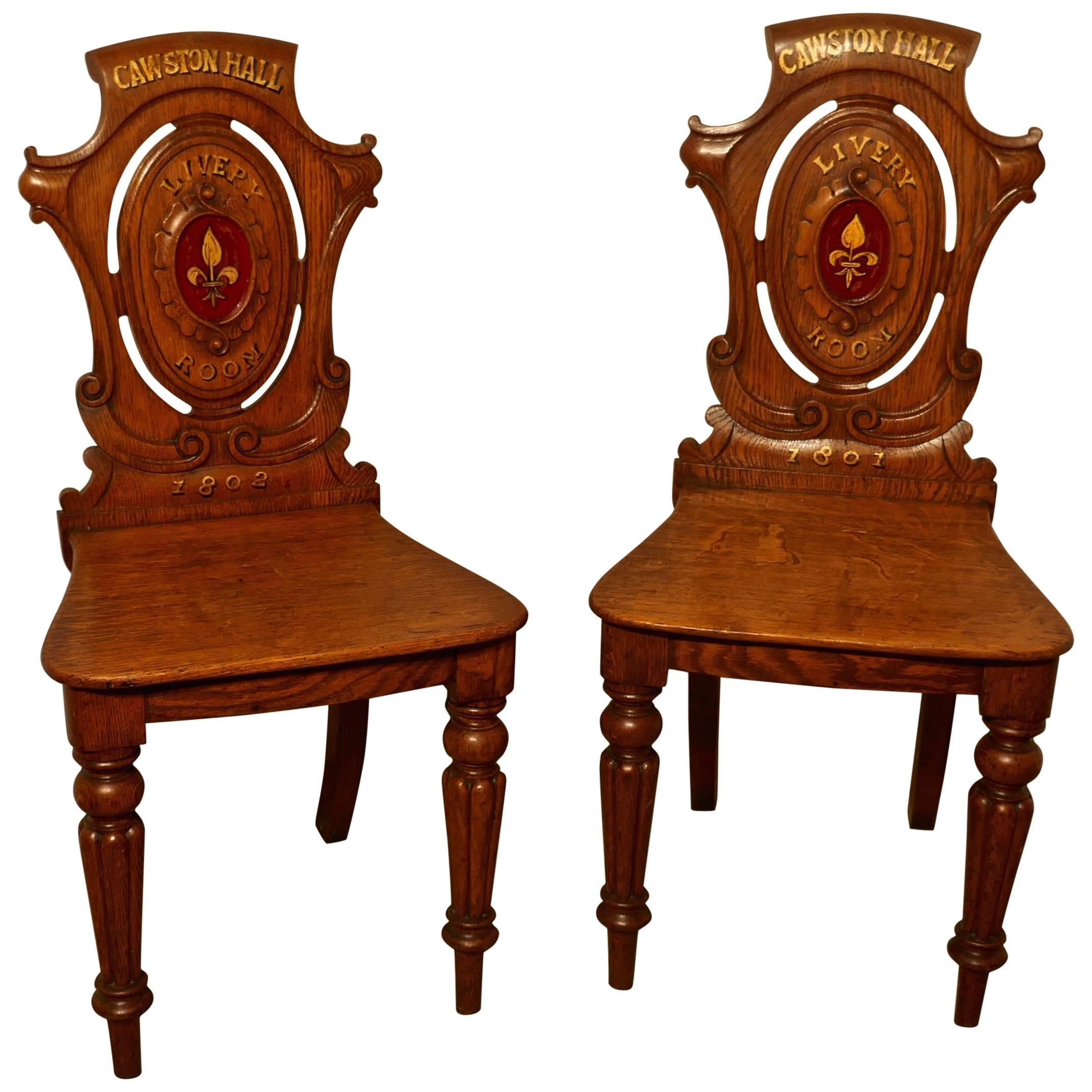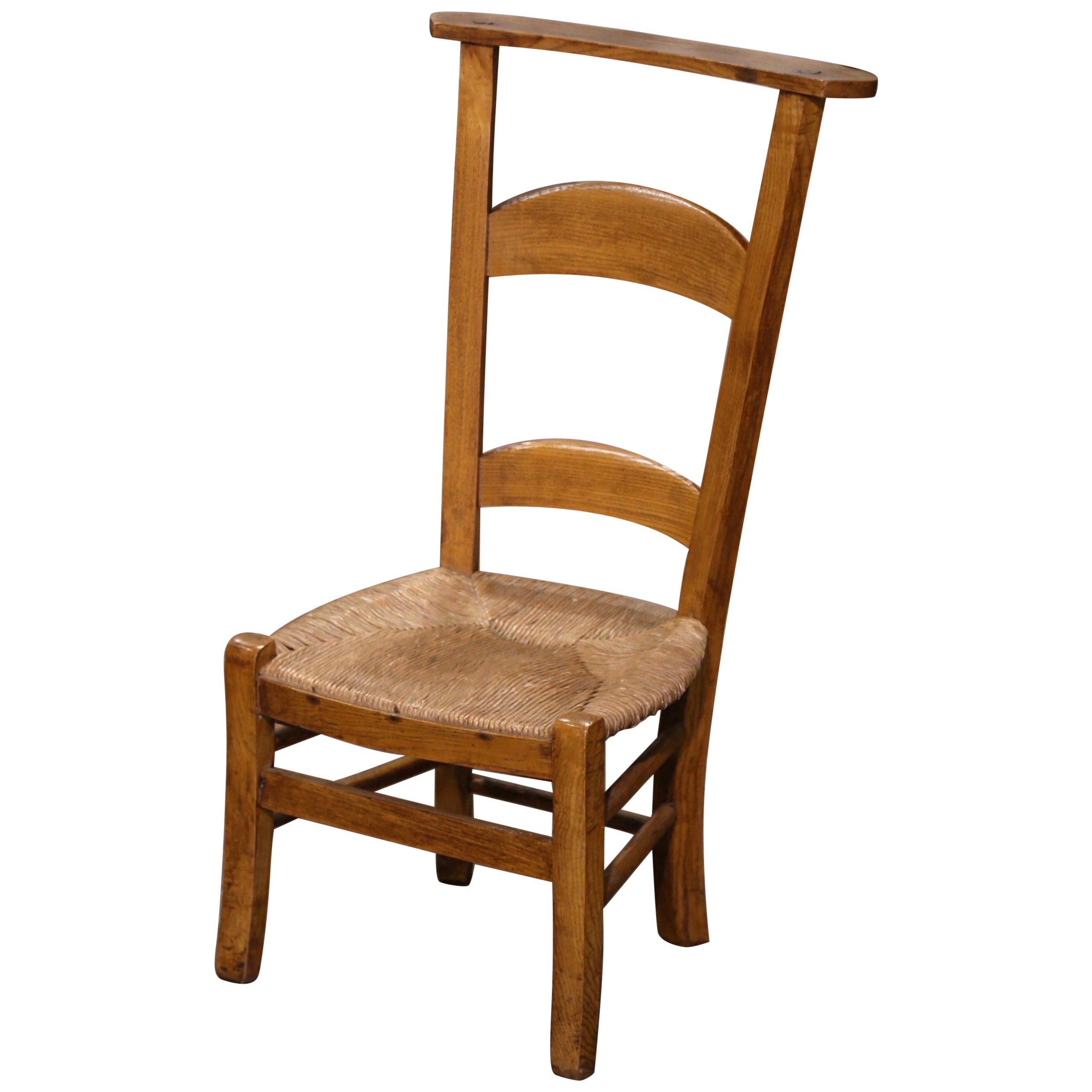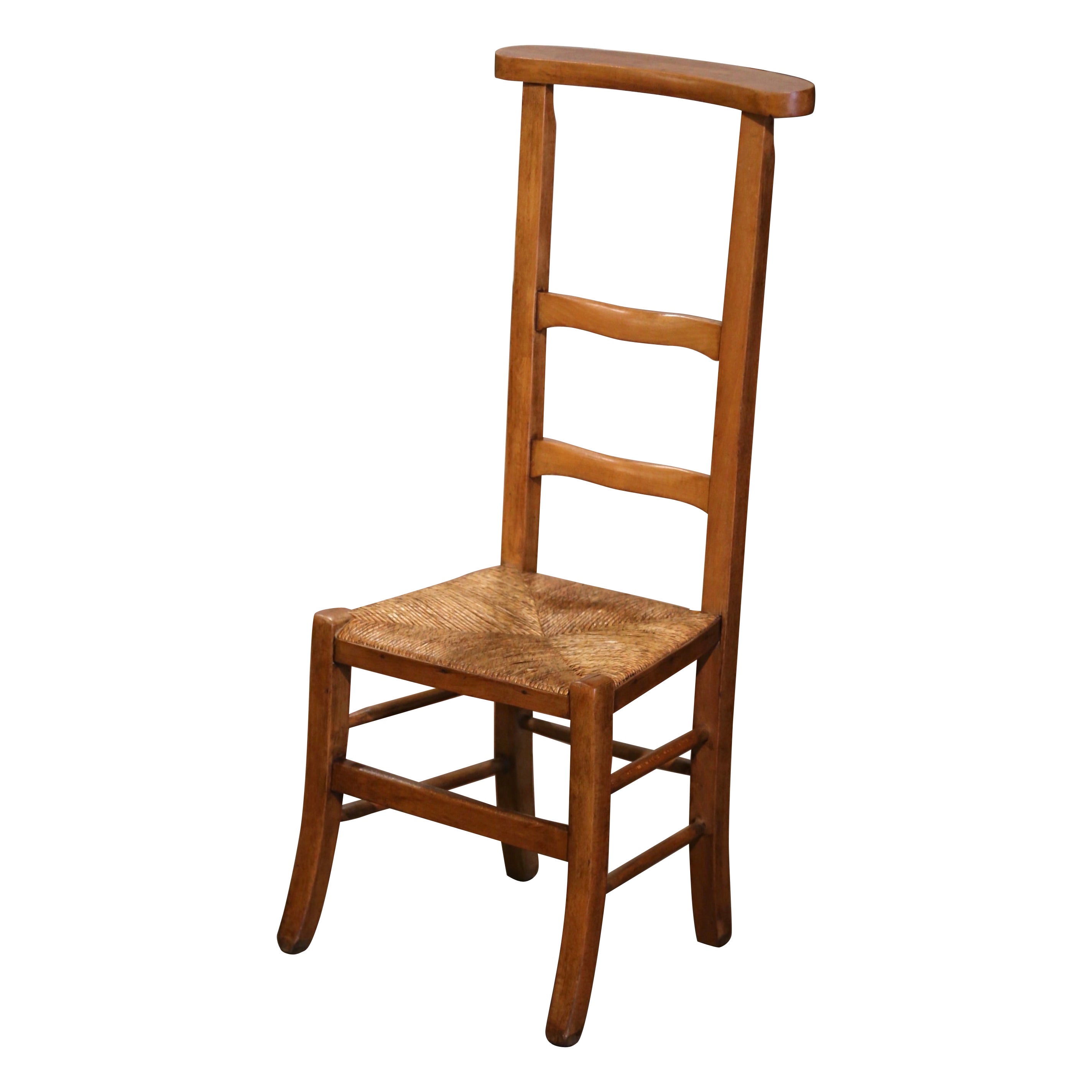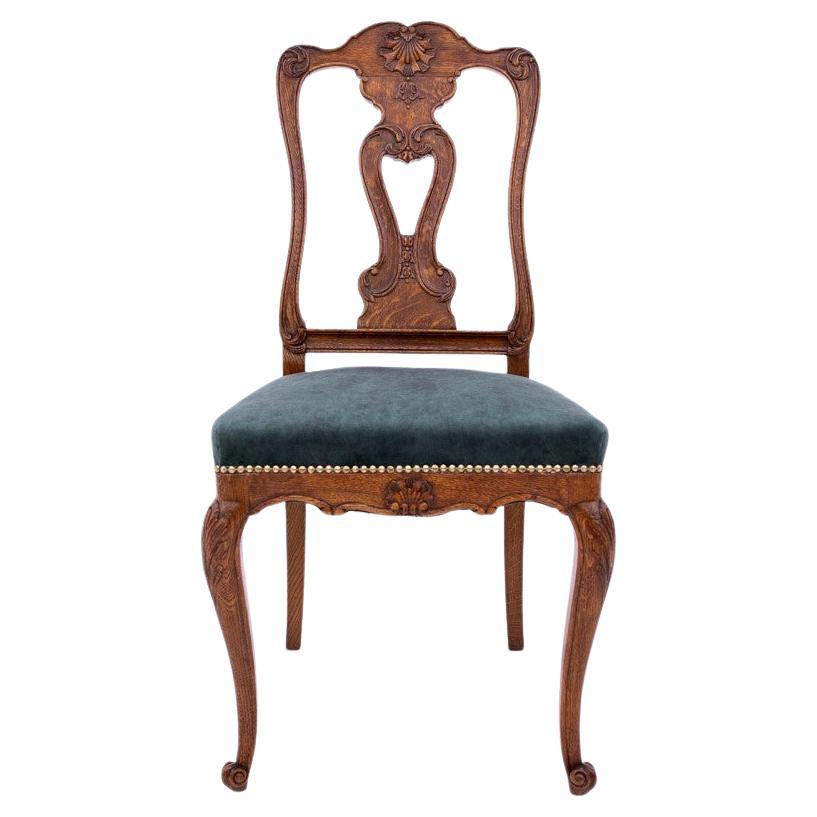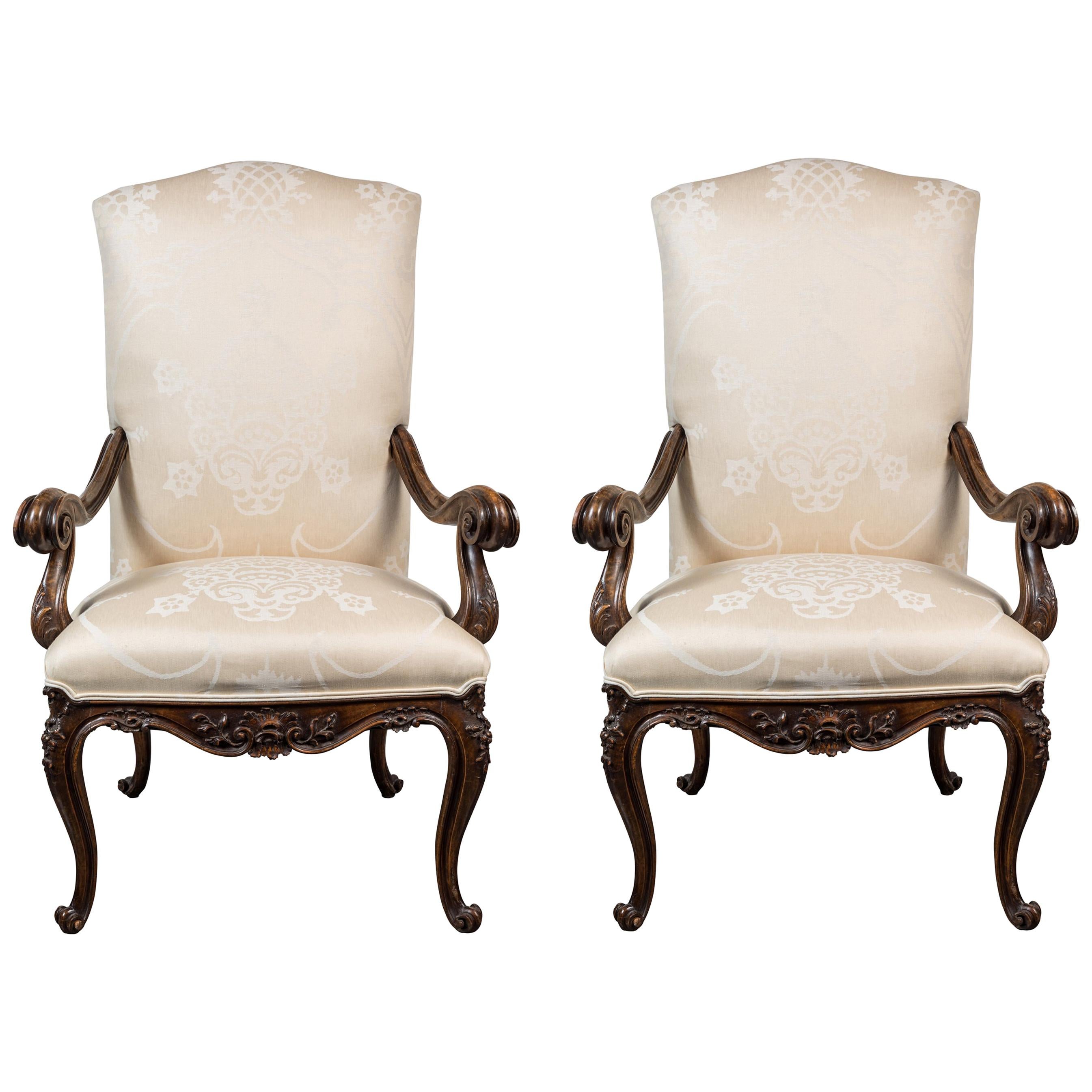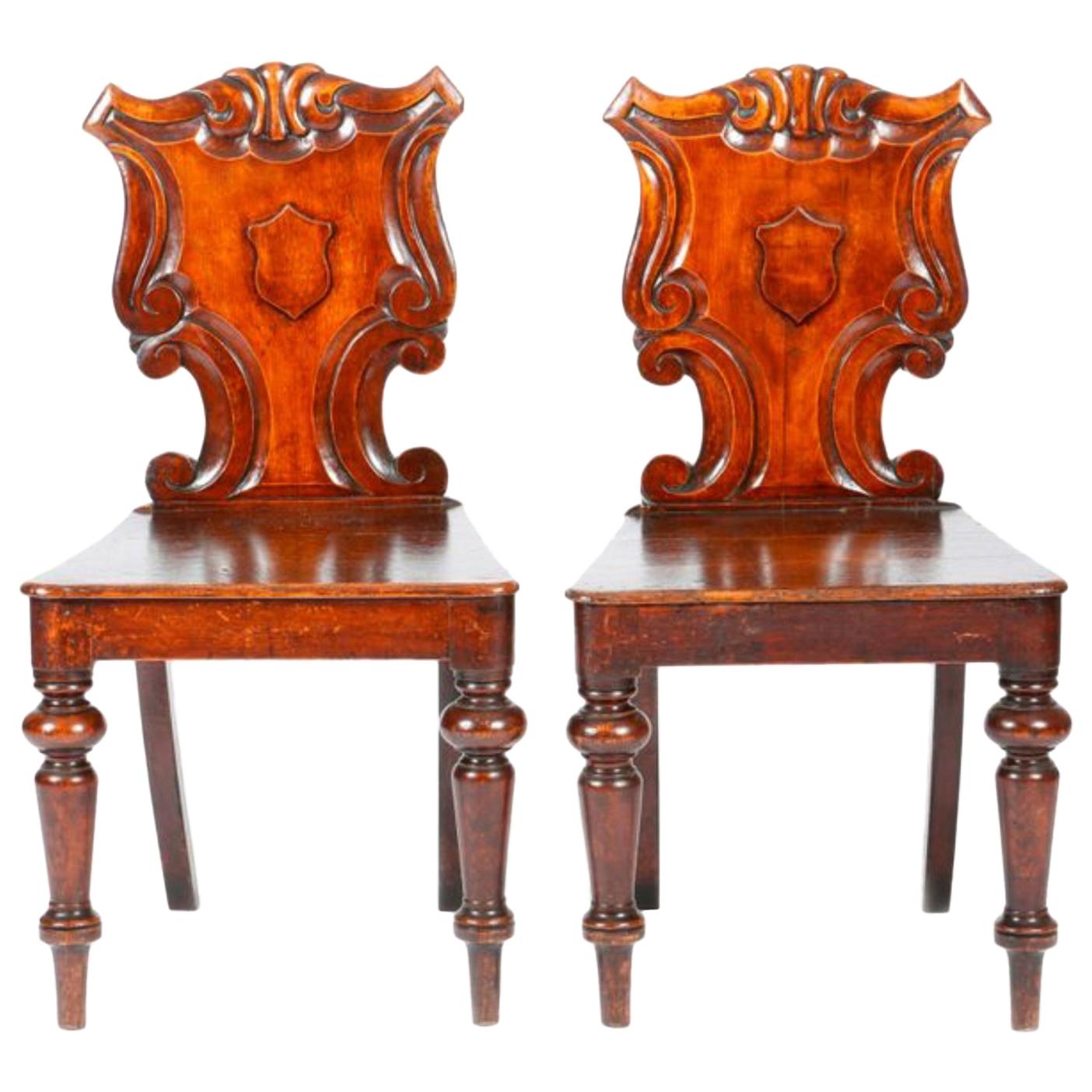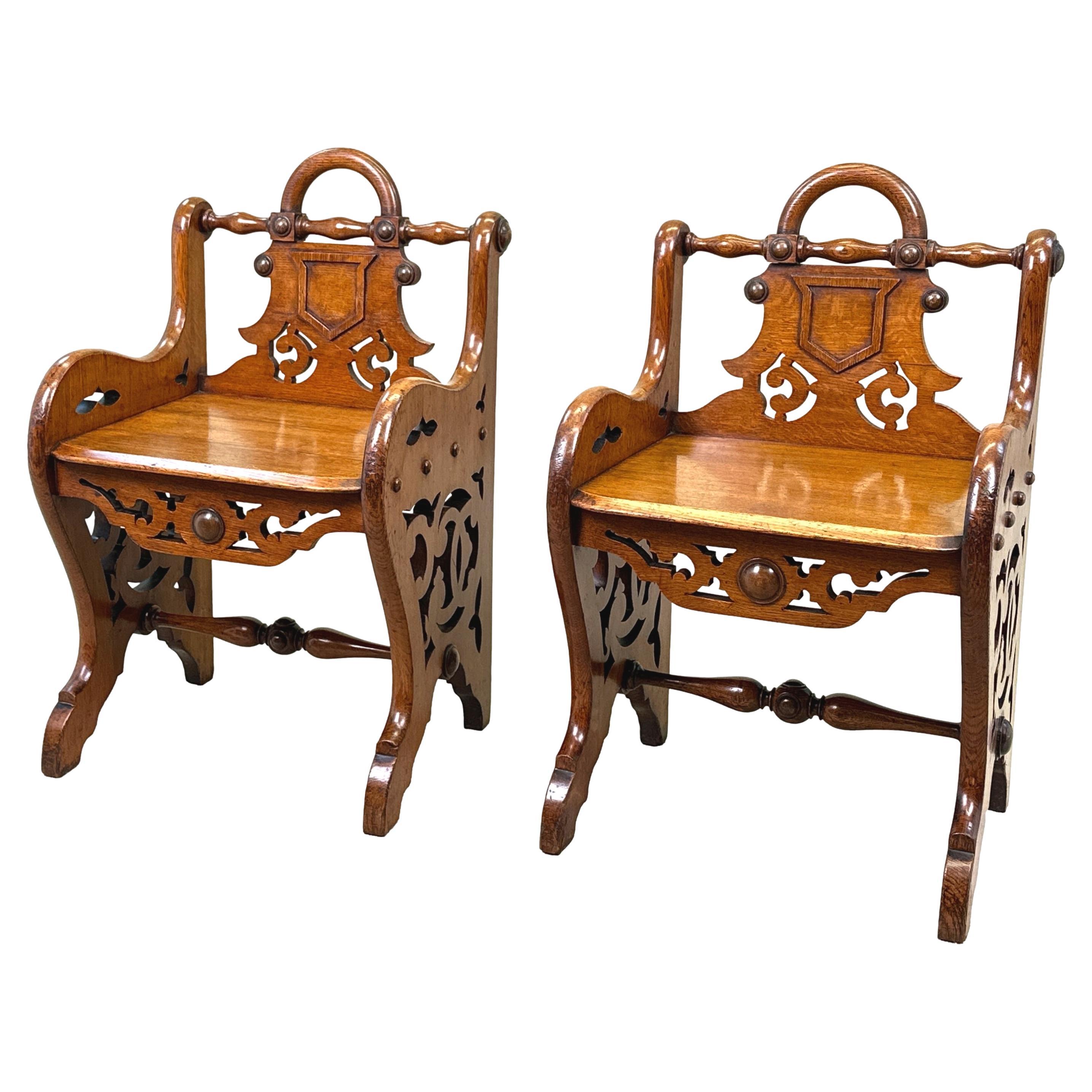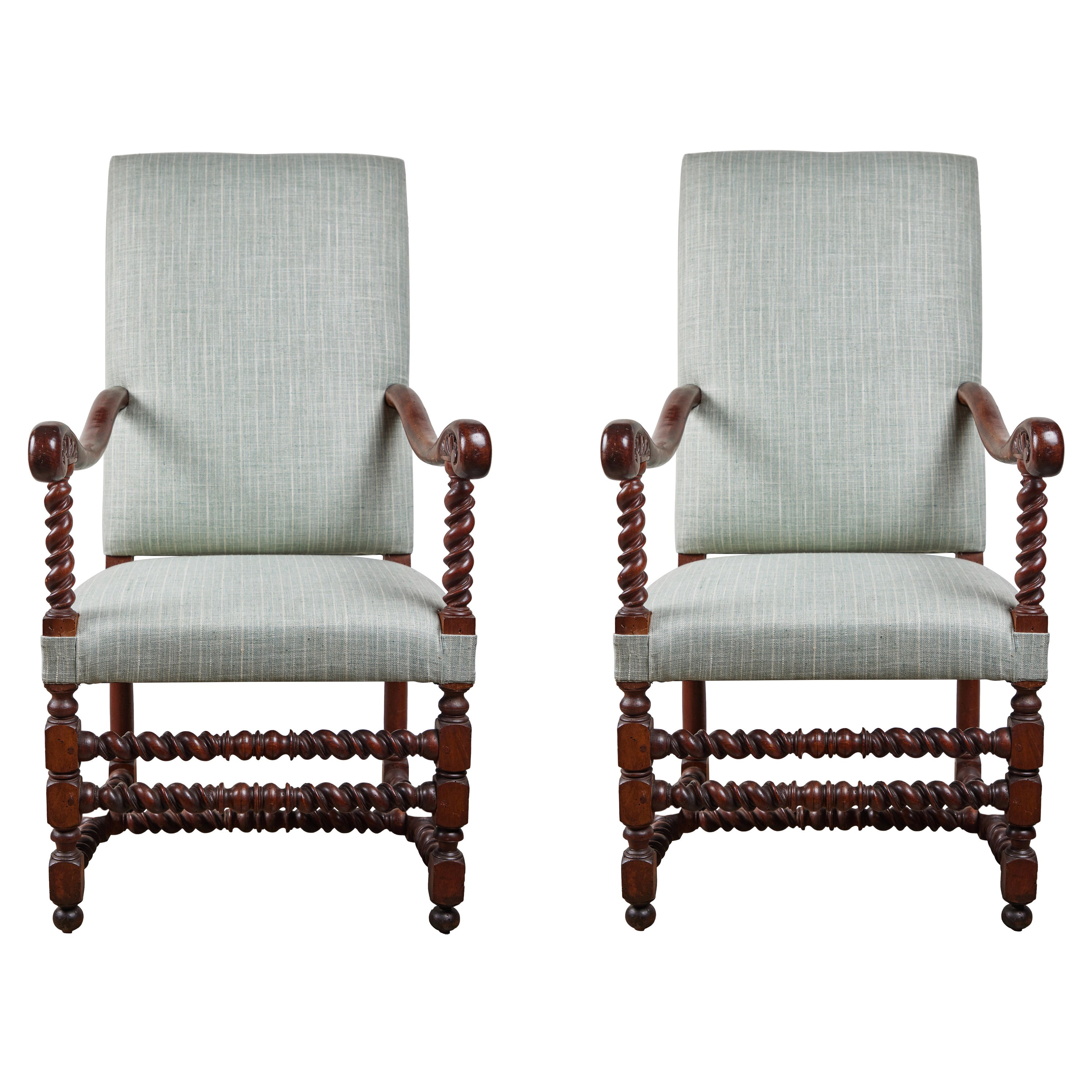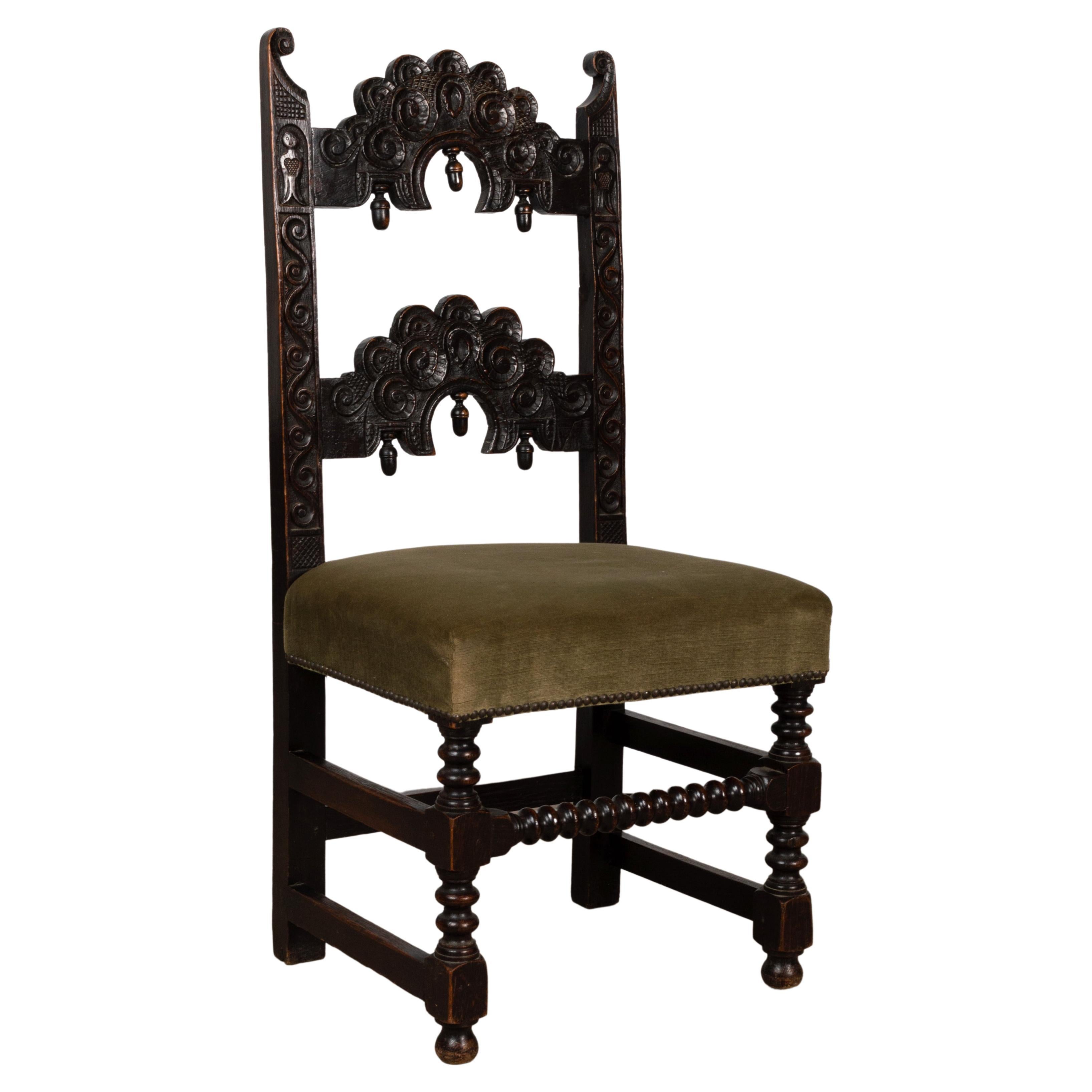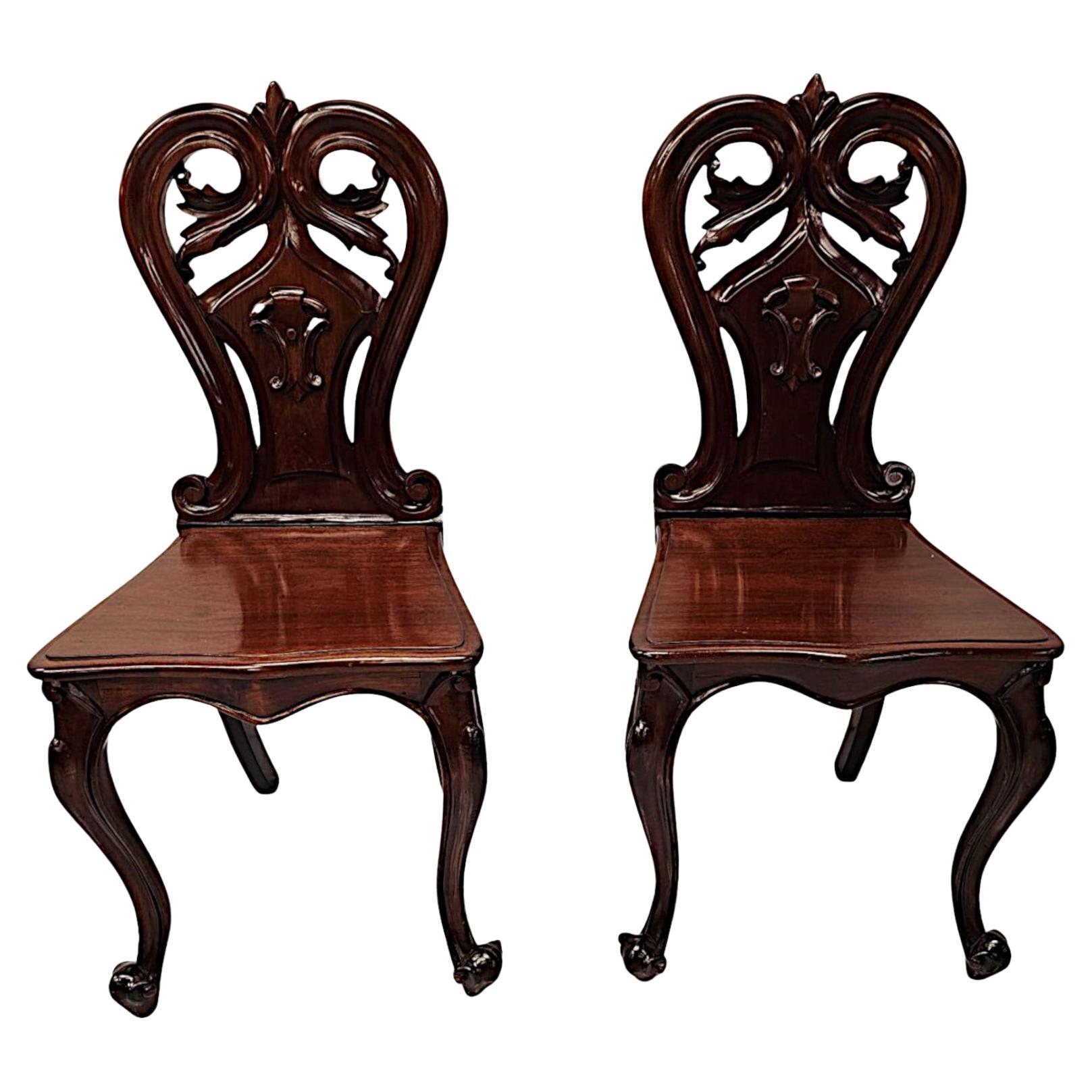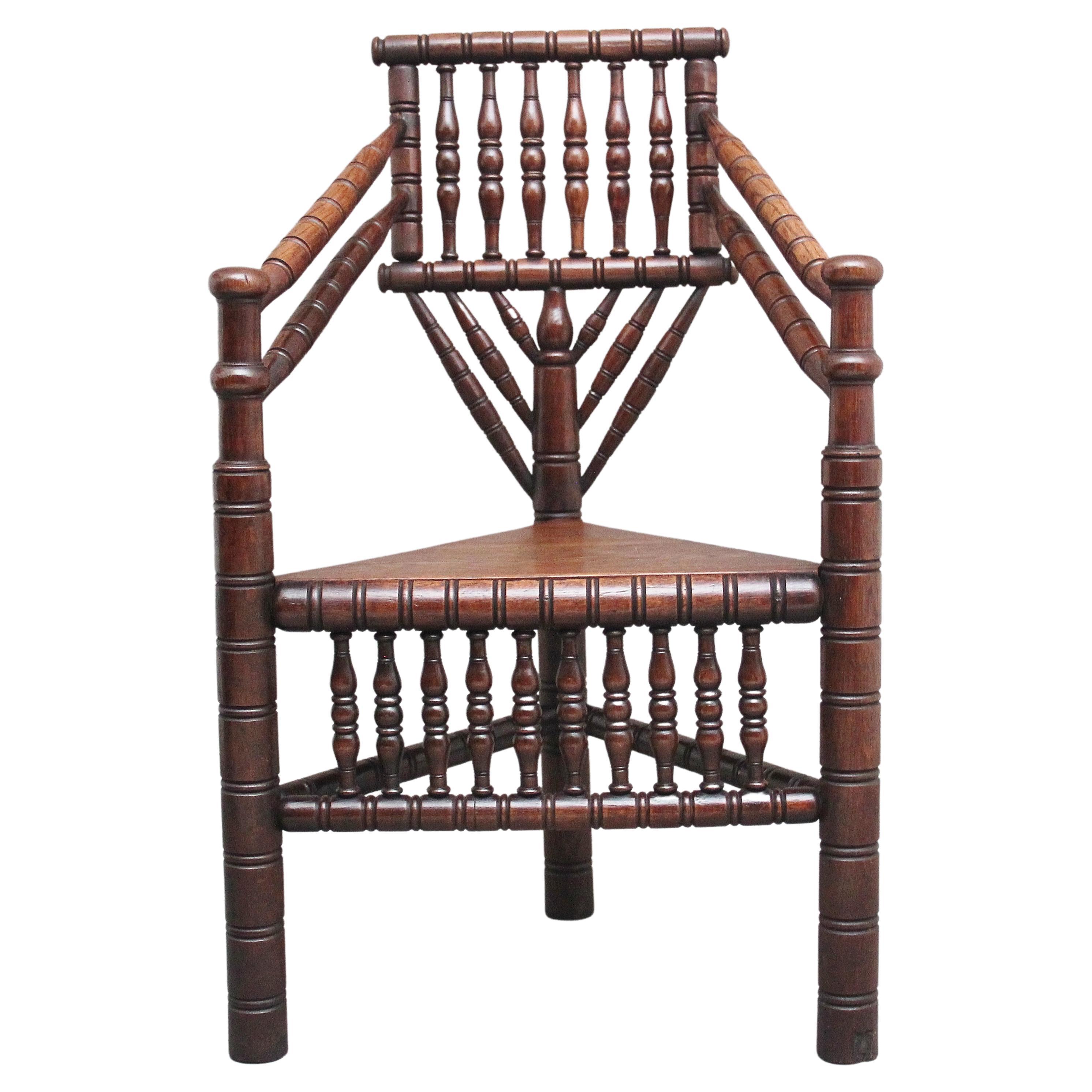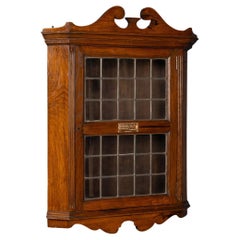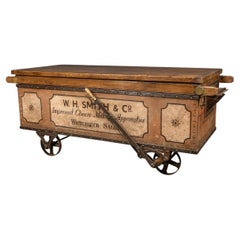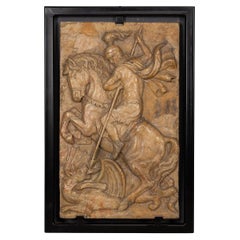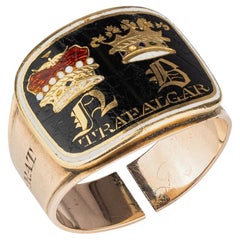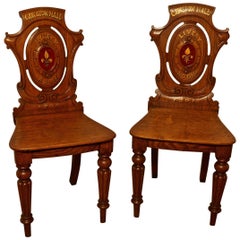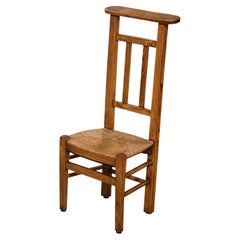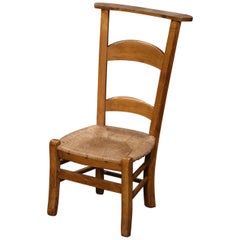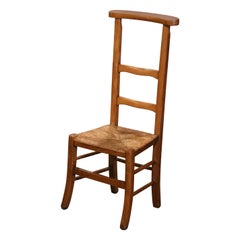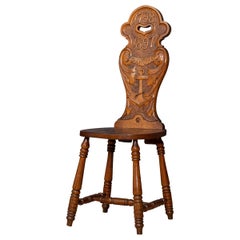
19th Century Hall Oak Chair From The Foudroyant, Lord Nelson’s Flagship
View Similar Items
Want more images or videos?
Request additional images or videos from the seller
1 of 14
19th Century Hall Oak Chair From The Foudroyant, Lord Nelson’s Flagship
Price:$1,700
$3,565.08List Price
About the Item
- Dimensions:Height: 41.34 in (105 cm)Width: 14.97 in (38 cm)Depth: 15.75 in (40 cm)
- Materials and Techniques:
- Place of Origin:
- Period:
- Date of Manufacture:circa 1890
- Condition:Wear consistent with age and use. Minor fading. In Great Condition - No Damage.
- Seller Location:Royal Tunbridge Wells, GB
- Reference Number:Seller: B68591stDibs: LU1348222791462
About the Seller
5.0
Platinum Seller
Premium sellers with a 4.7+ rating and 24-hour response times
Established in 2014
1stDibs seller since 2015
509 sales on 1stDibs
Typical response time: 1 hour
Authenticity Guarantee
In the unlikely event there’s an issue with an item’s authenticity, contact us within 1 year for a full refund. DetailsMoney-Back Guarantee
If your item is not as described, is damaged in transit, or does not arrive, contact us within 7 days for a full refund. Details24-Hour Cancellation
You have a 24-hour grace period in which to reconsider your purchase, with no questions asked.Vetted Professional Sellers
Our world-class sellers must adhere to strict standards for service and quality, maintaining the integrity of our listings.Price-Match Guarantee
If you find that a seller listed the same item for a lower price elsewhere, we’ll match it.Trusted Global Delivery
Our best-in-class carrier network provides specialized shipping options worldwide, including custom delivery.More From This Seller
View All19thC Timber Corner Cabinet, Oak From HMS Foudroyant, Lord Nelson's Flagship
Located in Royal Tunbridge Wells, Kent
A 19th Century rare timber corner cabinet, made from the oak salvaged from the Foudroyant, Lord Nelson’s flagship. A lead glazed door with maker's copper plate for 'Goodall, Lamb & H...
Category
Antique 19th Century British Other Historical Memorabilia
Materials
Glass, Oak
19th Century Victorian Freight Carriage with Oak Top, circa.1880
Located in Royal Tunbridge Wells, Kent
Antique 19th century Victorian freight truck used to transport feed to local dairies, this metal carriage has a solid oak top, original wheels and tilt lever, later sign written for ...
Category
Antique 19th Century British Victorian Historical Memorabilia
Materials
Metal
19th Century Italian Marble Plaque of George Slaying the Dragon, C.1870
Located in Royal Tunbridge Wells, Kent
Antique 19th Century Italian Grand Tour marble relief depicting St George slaying the Dragon.
England has always been one of the leading countries in terms of travelling and explori...
Category
Antique 19th Century Italian Grand Tour Historical Memorabilia
Materials
Marble
A Gold And Enamel Mourning Ring For Lord Nelson By John Salter, England, 1806
Located in Royal Tunbridge Wells, Kent
An extremely rare ring that commemorates the naval hero, Horatio Nelson, who died in 1805 at the Battle of Trafalgar, fighting against the Napoleonic forces. Dr William Nelson, the admiral's brother, ordered 58 mourning rings for family and friends and every admiral and post-captain who fought at the Battle of Trafalgar . The ring is inscribed on the bezel ‘Trafalgar’; outside the hoop with Nelson’s motto in Latin, ‘Let him who earned it bear the palm [of victory]’, adopted by Nelson from a poem ‘Ad Ventos’ written in 1727 by John Jortin (1698-1770). Inside is the inscription ‘Lost to his country 21 October 1805, aged 47’. The initials N and B stand for Nelson and Bronte.
Admiral Nelson was given the title of Duke of Bronte in 1799 by the King of Sicily and in 1801 became a Viscount. The two coronets above the initials refer to these titles. Tthe motto Palmam qui meruit ferat ("let him who has earned it, bear the palm") was added to his coat of arms in 1798 after the Battle of the Nile. Nelson was buried with full honours in St Paul's Cathedral. His cortege consisted of 32 admirals, over a hundred captains, and an escort of 10,000 soldiers.
This ring is an example of only fifty-eight that were made by Nelson's jeweller John Salter in 1806. Thirty-one were for Nelson's close family and friends, the rest for pall-bearers and other dignitaries (see The Nelson Dispatch, vol.3 pt.XII, oct.1990). Three similar examples of this ring are held extremely prestigious museums in the capital. One is in the Greenwich National Maritime Museum in London, another in The British Museum in London and another in the collection of the Victoria & Albert Museum, London, exhibited in the Jewellery Gallery, case 23, no. 8.
The ring has a particularly special provenance, arguably like no other mourning ring of Admiral Nelson’s. The ring belonged to the Reverend Alexander John Scott. The Reverend Alexander John Scott (1768-1840) was a British naval chaplain. He was appointed to the flagship H.M.S. Victory in 1803 where he served as private secretary to Lord Nelson. He was with Nelson when when he was shot on the quarter-deck of the Victory at the battle of Trafalgar on the 21st October 1805. Scott attended his dying chief in the cockpit of the flagship, receiving his last wishes. He refused to leave Nelson's body until it was brought back to England and placed in the coffin to lie in the Painted Hall Greenwich.
The ring, lock of hair and music book were passed down by the direct descendants of the Reverend Alexander John Scott's family and eventually gifted to the previous owners. The music book was a personal possession of the Reverend which gives watertight provenance of the person who owned the ring.
It is not clear exactly what Admiral Nelson’s last words really were although Scott documents Nelson’s last words to be “God and my country“. However, it is also recorded that a statement during his last hours was "Thank God I have done my duty.” Perhaps these two statements uttered in the last moments sound similar when mumbled by a feeble dying man. Nonetheless, it is noteworthy is that Scott remained by Admiral Nelson’s side as he died and his version is probably the most reliable.
The lock of hair is reputedly that of Lord Admiral Nelson. Without a DNA test there can be no conclusive proof of such. However, given that Reverend Alexander John Scott was with Nelson from the moment he was shot on the quarter-deck of H.M.S. Victory until the moment he was placed in his coffin, there is no reason to believe it is not a lock of Nelson’s hair.
It is difficult to overstate the significance and rarity of Nelson’s mourning rings. With only fifty-eight made, the vast majority of them were given to close family members and only a few were given to close friends. A close friend who receives a morning ring...
Category
Antique 19th Century English Historical Memorabilia
Materials
Gold, Enamel
Antique 20th Century Austrian Pair Of Deer Antler Hall Chairs c.1900
Located in Royal Tunbridge Wells, Kent
Antique 20th Century unusual pair of hall chairs, crafted in Austria around 1900. Made from deer antlers and legs, each chair features a seat upholstered in a deer pelt. Exquisitely ...
Category
20th Century Austrian Other Chairs
Materials
Antler, Fur, Wood
Antique 19th Century Chinese Lacquered Games Box c.1890
Located in Royal Tunbridge Wells, Kent
A superb and very rare 19th Century Chinese lacquered games box, dating to around 1890. Decorated with intricate traditional scenes and a fin...
Category
Antique 19th Century Chinese Other Games
Materials
Lacquer
You May Also Like
Early 19th Century Golden Oak Hall Chairs, from Cawston Hall Livery Room
Located in Godshill, Isle of Wight
Early 19th century golden oak hall chairs, from Cawston Hall Livery Room.
These are a delightful hall chairs, the superbly carved backs are...
Category
Antique Early 1800s English William IV Chairs
Materials
Oak
19th Century Country French Beech Wood and Rush Prayer Chair from Normandy
Located in Dallas, TX
Place this elegant antique prayer chair in a bedroom for your daily devotions. Created in Normandy, France circa 1880, the Prie-Dieu ( Pray God ), stands on curved legs joined by a d...
Category
Antique Late 19th Century French Country Religious Items
Materials
Rush, Beech
19th Century Country French Beech Wood and Rush Prayer Chair from Normandy
Located in Dallas, TX
Place this elegant antique prayer chair in a bedroom for your daily devotions. Created in Normandy, France circa 1880, the Prie-Dieu ( Pray God ), stands on curved legs joined by a d...
Category
Antique Late 19th Century French Country Religious Items
Materials
Rush, Beech
19th Century Country French Beech Wood and Rush Prayer Chair from Normandy
Located in Dallas, TX
Place this elegant antique prayer chair in a bedroom for your daily devotions. Created in Normandy, France circa 1880, the Prie-Dieu ( Pray God ), stands on curved legs joined by a d...
Category
Antique Late 19th Century French Country Religious Items
Materials
Rush, Beech
Oak chair from the late 19th century, Western Europe.
Located in Chorzów, PL
The solid oak chair has been reupholstered in new dark green fabric and finished with decorative copper upholstery nails.
Dimensions: height 102cm; width 48cm; depth 51cm; seat heig...
Category
Antique 1890s German Louis XV Chairs
Materials
Walnut
Grand, 19th Century Hall Chairs
Located in Los Angeles, CA
Pair of large, Italian, walnut hall chairs featuring dramatic scrolling arms above a relief carved apron with foliate details. Each chair atop delicate scrolled feet. Upholstered in ...
Category
Antique 1880s Italian Armchairs
Materials
Walnut
$14,000 / set
Recently Viewed
View AllMore Ways To Browse
Lifeboat Used
Used Furniture Blackpool
Nicholas Pocock
Hms Foudroyant
Vintage Christmas Ornament
Coffee Grinders
German Christmas Ornaments
Brass Cowboy
Western Cowboy Memorabilia
Used Flag Poles
Fire Memorabilia
Antique Sewing Machines
German Glass Christmas Ornaments
Ulysses S Grant
Brass Shell Casing
German Christmas Santa
Neil Armstrong
Victorian Advertising
